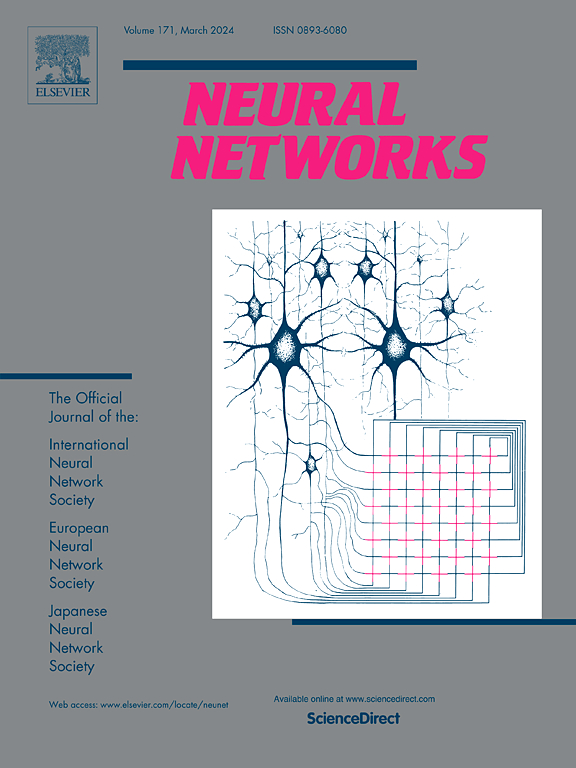LEESDFormer:一种轻量级的无监督cnn - transformer曲线估计网络,用于弱光图像增强、曝光抑制和去噪
IF 6
1区 计算机科学
Q1 COMPUTER SCIENCE, ARTIFICIAL INTELLIGENCE
引用次数: 0
摘要
目前的低光图像增强方法主要集中在图像内低光区域的增强。然而,他们往往没有充分考虑混合曝光和噪声对图像的影响,导致增强效果不理想,甚至丢失一些详细信息。此外,这些方法主要依赖于卷积神经网络(cnn),而卷积神经网络在捕获远程依赖关系和全局信息方面存在固有的限制。为了解决这些问题,本文引入了首个基于CNN-Transformer的无监督微光图像增强方法LEESDFormer。首先,我们提出了一种弱光增强和曝光抑制s形曲线(LEES-S曲线),将复杂的弱光增强和曝光抑制问题简化为更简单的曲线估计任务,从而大大降低了任务的复杂性。LEESDFormer通过低光图像增强和曝光抑制模块(LEESM)迭代LEES-S曲线,从而达到期望的增强效果。随后,利用图像去噪模块(IDM)对增强后的图像进行去噪。大量的实验表明,与最先进的无监督低光图像增强方法相比,我们的方法具有出色的鲁棒性、泛化能力和视觉效果,甚至优于一些监督学习方法。值得注意的是,我们的方法在llo -v2-real数据集上实现了21 dB的峰值信噪比(PSNR),证明了其优越的增强性能和去噪能力。此外,LEESDFormer简单高效,只有65 K个参数,处理每张图像仅需8 ms,使其可部署在资源有限的设备上,具有重要的实用价值。本文章由计算机程序翻译,如有差异,请以英文原文为准。
LEESDFormer: A lightweight unsupervised CNN-Transformer-based curve estimation network for low-light image enhancement, exposure suppression, and denoising
Current low-light image enhancement methods mainly focus on improving the low-light regions within images. However, they often fail to adequately consider the impact of mixed exposures and noise on the images, resulting in suboptimal enhancement results and even loss of some detailed information. Moreover, these methods predominantly rely on convolutional neural networks (CNNs), which have inherent constraints in capturing long-range dependencies and global information. To address these issues, this paper introduces LEESDFormer, the first unsupervised low-light image enhancement method based on CNN-Transformer. Firstly, we propose a Low-light Enhancement and Exposure Suppression S-shaped curve (LEES-S curve), which simplifies the complex challenge of low-light enhancement and exposure suppression into a simpler curve estimation task, thus substantially reducing the task's complexity. LEESDFormer iterates the LEES-S curve through the Low-light Image Enhancement and Exposure Suppression Module (LEESM), thereby achieving desired enhancement effects. Subsequently, the Image Denoising Module (IDM) is employed to denoise the enhanced images. Extensive experiments demonstrate that our method exhibits excellent robustness, generalization capabilities, and visual effects compared to state-of-the-art unsupervised low-light image enhancement methods, even outperforming some supervised learning approaches. Notably, our method achieves a Peak Signal-to-Noise Ratio (PSNR) of 21 dB on the LOL-v2-real dataset, demonstrating its superior enhancement performance and denoising capability. Furthermore, LEESDFormer is simple and efficient, with only 65 K parameters, and processes each image in merely 8 ms, making it deployable on resource-limited devices and having significant practical value.
求助全文
通过发布文献求助,成功后即可免费获取论文全文。
去求助
来源期刊

Neural Networks
工程技术-计算机:人工智能
CiteScore
13.90
自引率
7.70%
发文量
425
审稿时长
67 days
期刊介绍:
Neural Networks is a platform that aims to foster an international community of scholars and practitioners interested in neural networks, deep learning, and other approaches to artificial intelligence and machine learning. Our journal invites submissions covering various aspects of neural networks research, from computational neuroscience and cognitive modeling to mathematical analyses and engineering applications. By providing a forum for interdisciplinary discussions between biology and technology, we aim to encourage the development of biologically-inspired artificial intelligence.
 求助内容:
求助内容: 应助结果提醒方式:
应助结果提醒方式:


